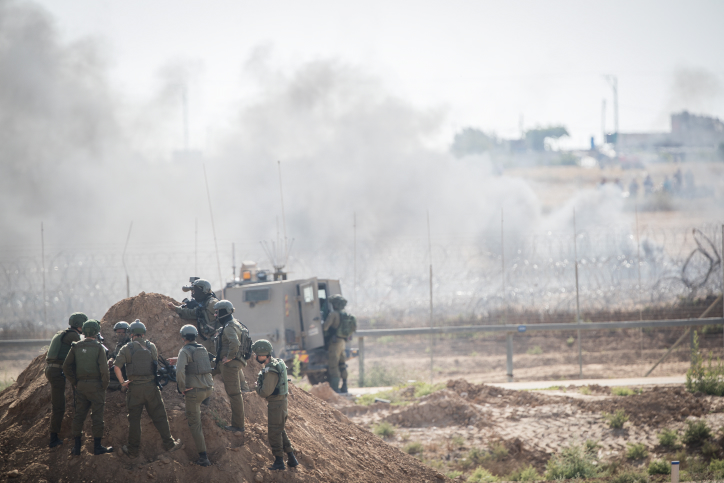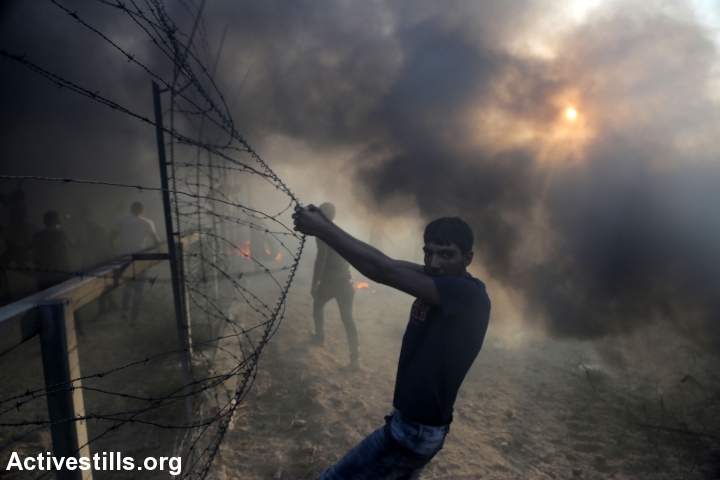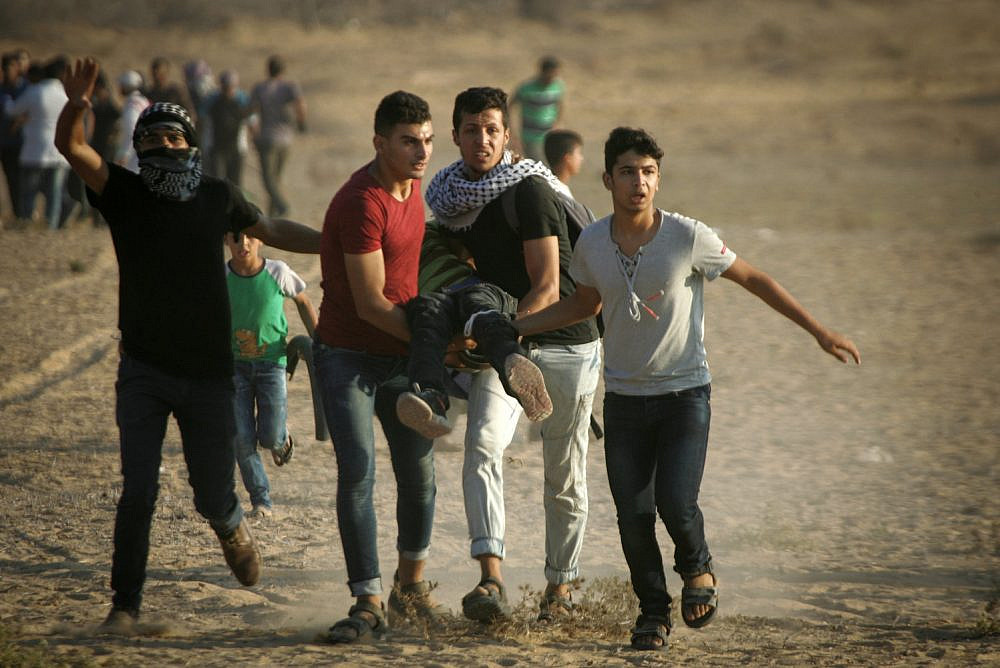Razan a-Najjar died about two-and-a-half years ago, but I can still clearly see her in my mind’s eye. The 21-year-old paramedic was shot and killed by Israeli soldiers during one of the Great Return March protests in Gaza on June 1, 2018. Witnesses say she was shot as she made her way toward the fence that separates Israel and the Gaza Strip to tend to the wounded, donning a white medical coat.
Pictures of the smiling young woman flooded the online world but were soon lost in the sea of photos and names of those who were killed during the weekly protests, in what quickly became a weekly ritual of death, despair, and blood.
A-Najjar was one of more than 200 Palestinians killed by Israeli soldiers during the Great Return March protests over the course of 86 weeks, beginning in March 30, 2018. According to the UN, more than 33,000 people were wounded in these protests, some so seriously they were forced to have their limbs amputated. The victims included men, women, children, medical crews, people with disabilities, journalists, and others. I vividly remember those dreaded Fridays, when we would follow the reports from the field with horror, updating by the hour. I remember feeling that what was happening there was atrocious on a different scale. It was inconceivable.
Inconceivable, and yet not entirely surprising. In an interview with +972 Magazine before the protests began, one of the organizers of the march, Hasan al-Kurd, underscored the civilian nature of the planned protests, while at the same time voicing concern over the possibility of a lethal response from the military.
He couldn’t have been more right. When human rights organizations petitioned against the IDF open-fire regulations used in these protests, with one case brought by human rights groups Yesh Din, the Association for Civil Rights in Israel, Gisha, and HaMoked, and another by Adalah and Gaza-based Al Mezan, the military took the approach that the mass killings and injuries in Gaza were not a matter for criminal investigation. Rather, it claimed the incidents were part of Israel’s armed conflict with Hamas — even if the protesters were largely unarmed civilians who took no part in hostilities.
As such, according to the military, whatever happened during the protests fell squarely under the rules of war, and any complaints about deaths and injuries should be dealt with under a different legal framework. And so, rather than putting these complaints through the usual track for military criminal investigations, they were referred to the oddly-named General Staff Mechanism for Fact-Finding Assessments.
This mechanism, which was established after the 2014 Gaza war, is meant to perform quick factual assessments of suspected breaches of the rules of war. A position paper released this week by human rights group Yesh Din, which relies on figures received from the military, reveals that the main function of this authority is — as always — to whitewash Israeli violence.

The paper also reveals that while the fact-finding authority looked into 234 Palestinian deaths, only 17 investigations have thus far been opened, most of which are still ongoing. Only one indictment has been filed, ultimately resulting in a plea bargain in which the shooting soldier was charged with a disciplinary rather than criminal offense. The indictment itself makes no mention of the offense related to the actual killing, and the soldier was given a lenient sentence of 30 days’ military community work, a suspended prison sentence, and a demotion to the rank of private.
Two years after the Great Return March began, around 80 percent of the incidents forwarded to the fact-finding authority for assessment are still under review or investigation. It is also important to note that the mechanism failed to look into even a single case among the thousands of injuries, many of them severe — including ones that have left victims permanently paralyzed or forced to undergo amputations. These were not deemed worthy of even a performative review.
Furthermore, all the materials collected during the review remain privileged and cannot be used as evidence against suspects on the almost hypothetical off-chance that the army ultimately orders a criminal investigation. An equally interesting detail is the identity of the person at the helm of this authority: Maj. Gen. Itai Veruv, the head of the military colleges.
A footnote in Yesh Din’s position paper provides the following tidbit about Veruv: in 2009, while serving as the commander of the IDF’s Kfir Brigade — the largest of Israel’s infantry brigades, which has a particular history of brutality toward Palestinians in the West Bank — Veruv testified in the trial of Lt. Adam Malul, who had been charged with beating Palestinians. Veruv admitted he allowed soldiers to use physical violence during spontaneous “interrogations” of Palestinian civilians, even when they were passersby who were suspected of nothing and posed no danger.

Veruv was officially reprimanded for these comments by the General Officer Commanding Army Headquarters. Yesh Din and the Association for Civil Rights in Israel filed a High Court petition demanding his immediate suspension as well as a criminal investigation. A year later, in June 2010, the Military Advocate General at the time, Avichai Mandelblit, did order a criminal investigation against Veruv and the petition was deleted. The investigation was closed without any action against Veruv in January 2011.
For nearly two years, week in and week out, the military sent trained marksmen with full protective gear to face off against residents of the besieged and battered Gaza Strip who went to protest near the fence. Judging by the cumulative experience gained over 50 years of occupation, each and every one of those soldiers had every reason to believe that no matter what happened when they squeezed that trigger, the system would protect them and cover up their crimes. The 234 dead, 17 investigations, and solitary indictment — for the killing of a 14-year-old boy — that ended in 30 days of military community work, a suspended sentence, and a demotion to the rank of private, prove they were right.
This article was first published in Hebrew on Local Call. Read it here.


